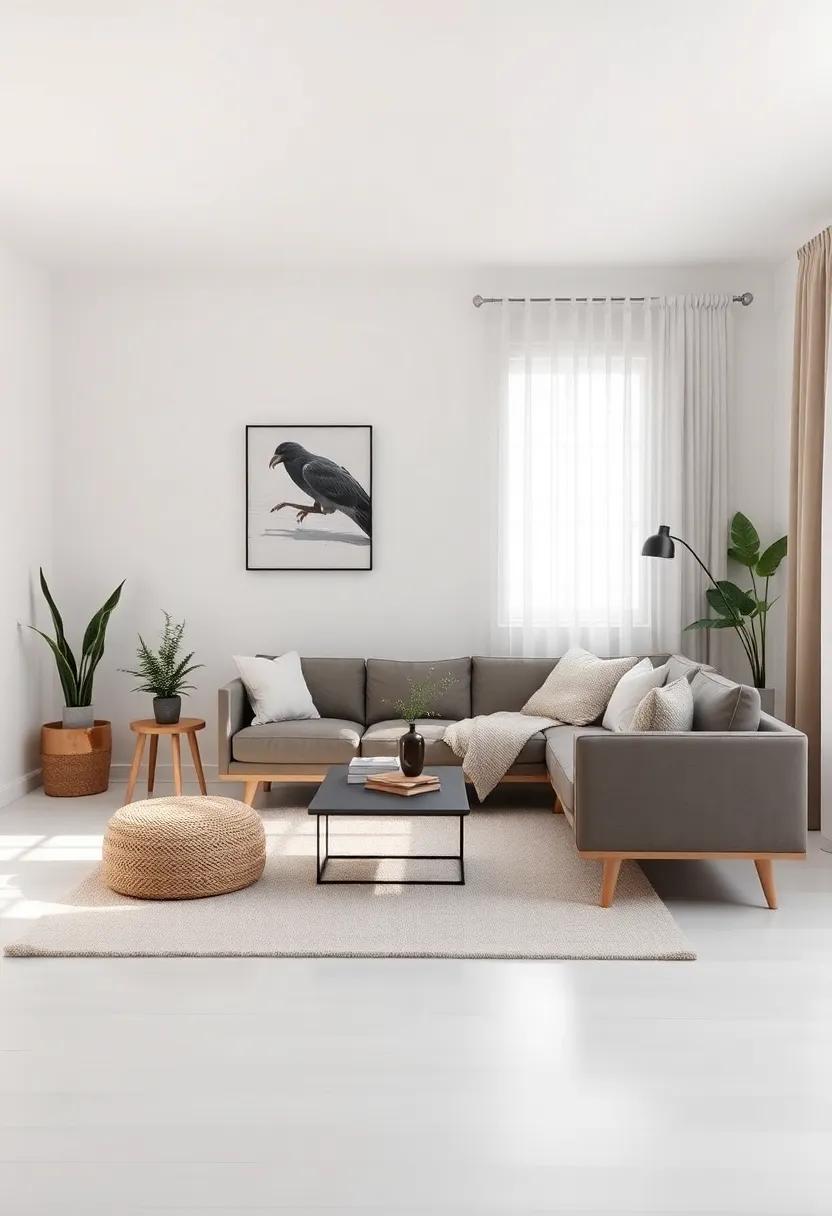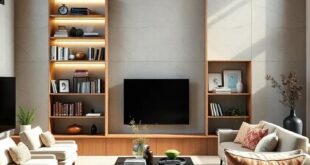In an age where clutter often overwhelms our physical and mental spaces, the allure of simplicity invites us to rethink our living environments. Picture a small living room transformed into a cozy minimalist retreat—a sanctuary where every piece has purpose, and each corner exudes tranquility. Embracing simplicity doesn’t just enhance aesthetic appeal; it cultivates a sense of peace amidst the chaos of modern life. Weather you’re a seasoned minimalism enthusiast or just beginning to explore this calming lifestyle, this article will guide you through the art of redefining your small living area. Together, we will uncover practical tips and inspiring ideas that celebrate functional design, harmonious color palettes, and mindful decor choices, helping you create an inviting space that invites relaxation and reflection. Join us on this journey toward a serene, minimalist haven that truly feels like home.
Embracing a Minimalist Mindset for a Cozy Living Space
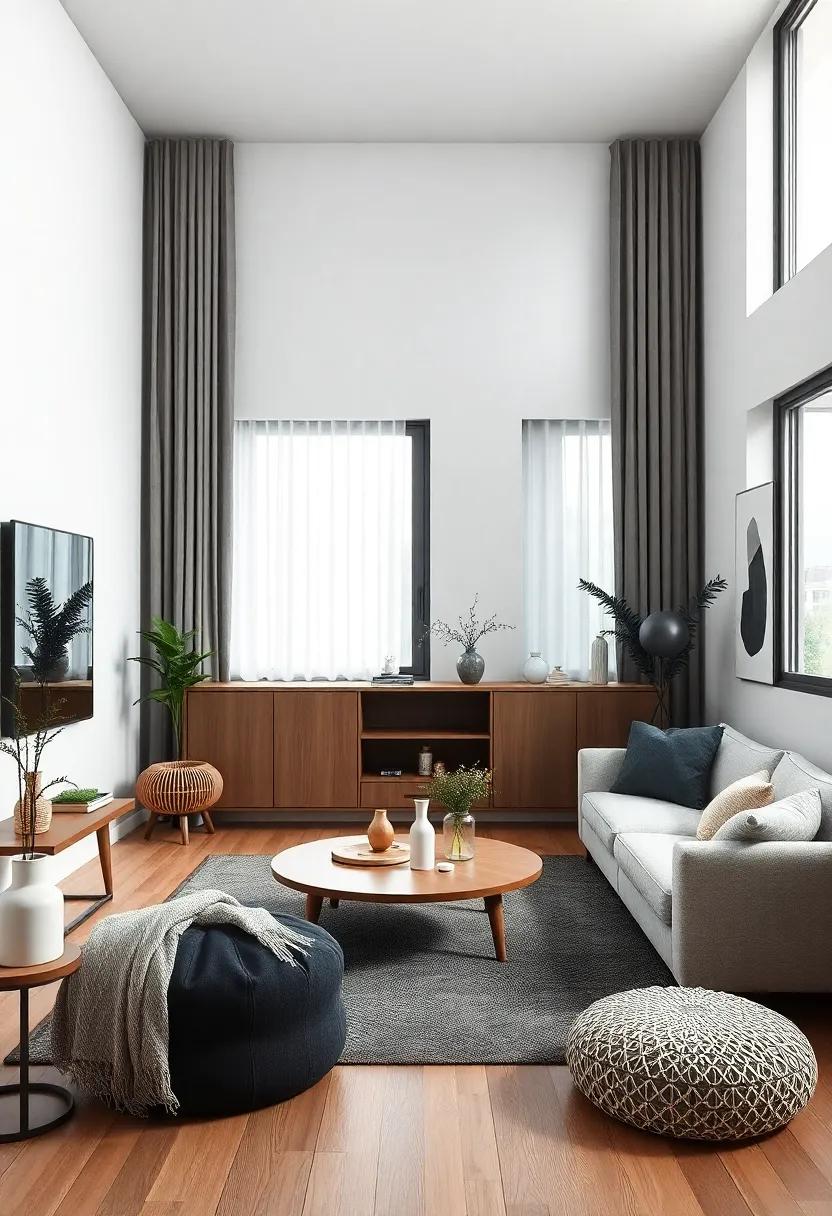
To cultivate a cozy atmosphere within a small living room, begin by removing clutter and embracing a more intentional selection of decor. This doesn’t mean stripping your space of personality; rather, it encourages you to curate pieces that resonate with you. opt for multifunctional furniture, such as a sleek sofa bed or nesting tables, as they provide practicality while minimizing visual distraction. Focus on a subtle color palette, incorporating soft neutrals that allow light to flow effortlessly, creating an airy ambiance.
Incorporate natural elements to enhance warmth and comfort. Consider the following essentials for a cozy minimalist aesthetic:
- Textiles: Soft throws and cushions can add layers without overwhelming the space.
- Greenery: A few well-placed plants bring life and a pop of color, reducing the starkness of minimalism.
- Lighting: Utilize assorted light sources—floor lamps, table lamps, or fairy lights—to create a warm, inviting glow.
Prioritize these core elements to foster a soothing retreat where simplicity and coziness unite effortlessly.
Transforming Small Spaces with Thoughtful design Choices
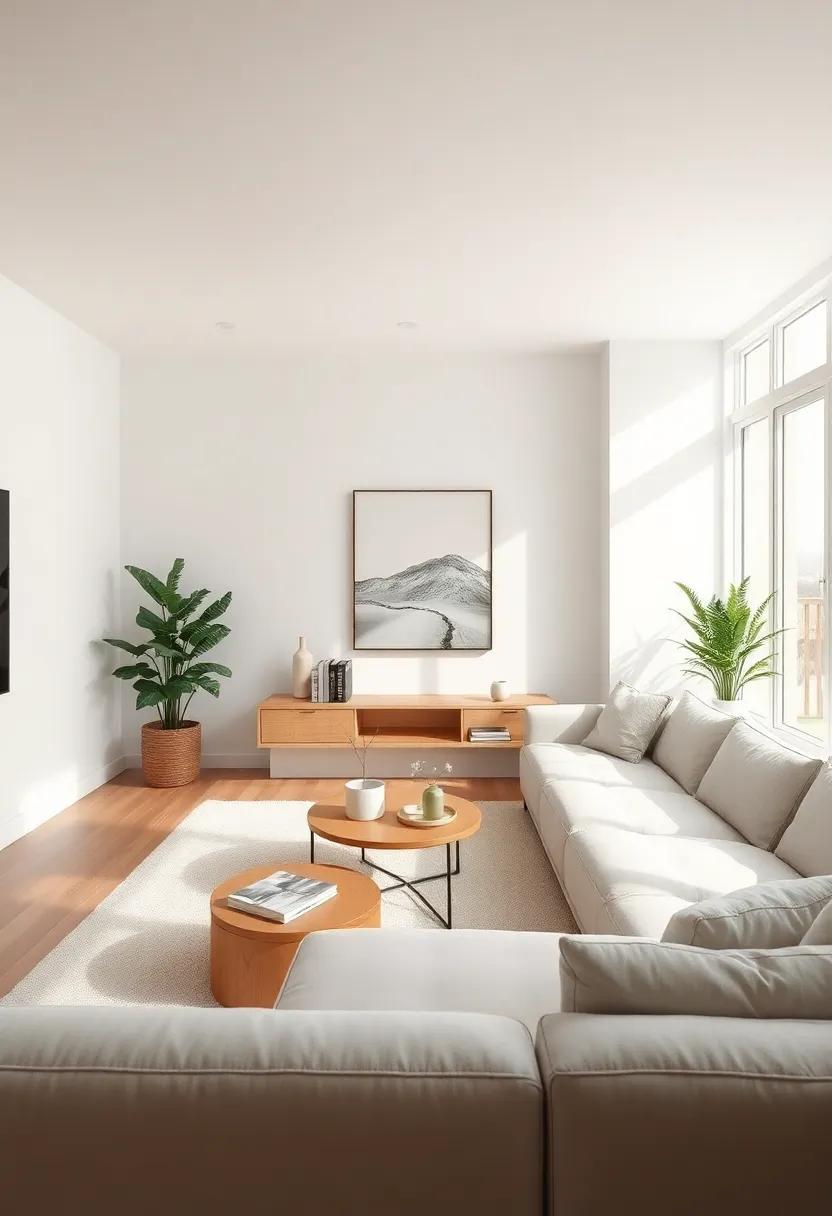
Small living rooms are treasures waiting to be uncovered. Embracing a minimalist design means embracing functional simplicity—every element must serve a purpose without crowding the space. Start with a neutral color palette to create an illusion of openness and calmness. Sofas and chairs should be sleek and low-profile, allowing the room to breathe. incorporating multi-functional furniture can also optimize space; think coffee tables that double as storage or ottomans that can serve as extra seating when needed. With clever arrangements and a focus on each piece’s role, you can create a harmonious flow that makes your living area feel larger.
Adding personal touches through thoughtful decor choices can bring warmth to your minimalist haven. Consider using a few statement pieces rather than multiple small items. A large piece of art or a uniquely shaped vase can serve as a focal point without overwhelming the senses. Incorporate natural elements like plants to enhance the sense of tranquility and life in your small space. Below is a simple guide to prioritize your design choices efficiently:
| Design Element | Purpose |
|---|---|
| Neutral Color Scheme | Creates a sense of space and calm |
| Multi-functional Furniture | Maximizes utility while minimizing clutter |
| Statement Decor | Adds personality without chaos |
| Natural Elements | Brings life and enhances air quality |
Crafting a Color Palette that Exudes Calmness and Serenity
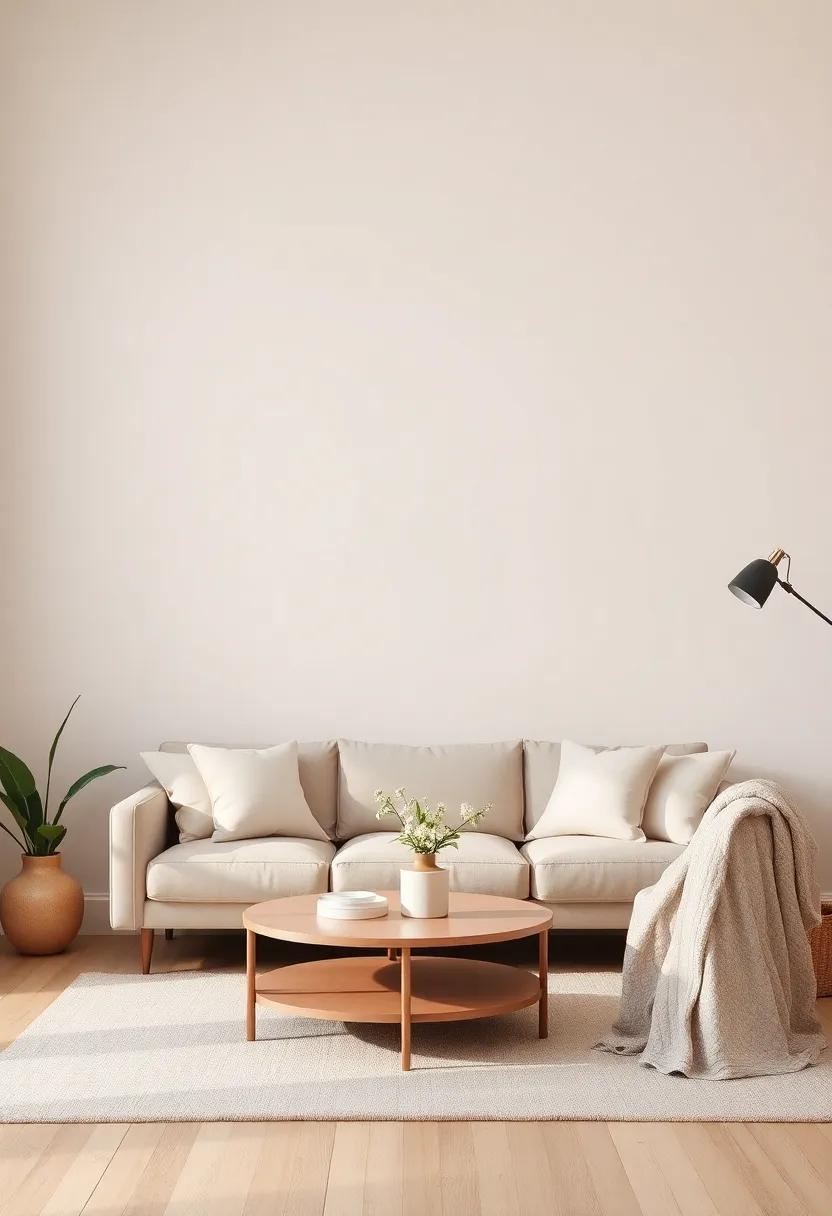
Creating an atmosphere that promotes tranquility is essential for any small living room, especially in a minimalist retreat. Start by selecting a base color that evokes calmness—think soft blues, gentle greens, or delicate grays. These shades serve as a serene backdrop and can be complemented by accents from the neutral color palette, such as whites and beiges, which further enhance the peaceful vibe.The key is to focus on a cohesive color story that allows each element in the space to seamlessly integrate.
along with your base color, consider adding variations in textures to create visual interest without overwhelming the senses. Choose furnishings made from natural materials like wood and linen, and incorporate soft textiles to enhance comfort.To guide you in crafting this palette, here’s a simple breakdown of effective pairings:
| Base color | accent Color | Texture |
|---|---|---|
| Soft Blue | Warm Beige | Linen Cushions |
| Gentle Green | Warm White | Knitted Throw |
| Delicate gray | Soft Taupe | Woven Basket |
Selecting Multi-Functional Furniture for Maximum Usability
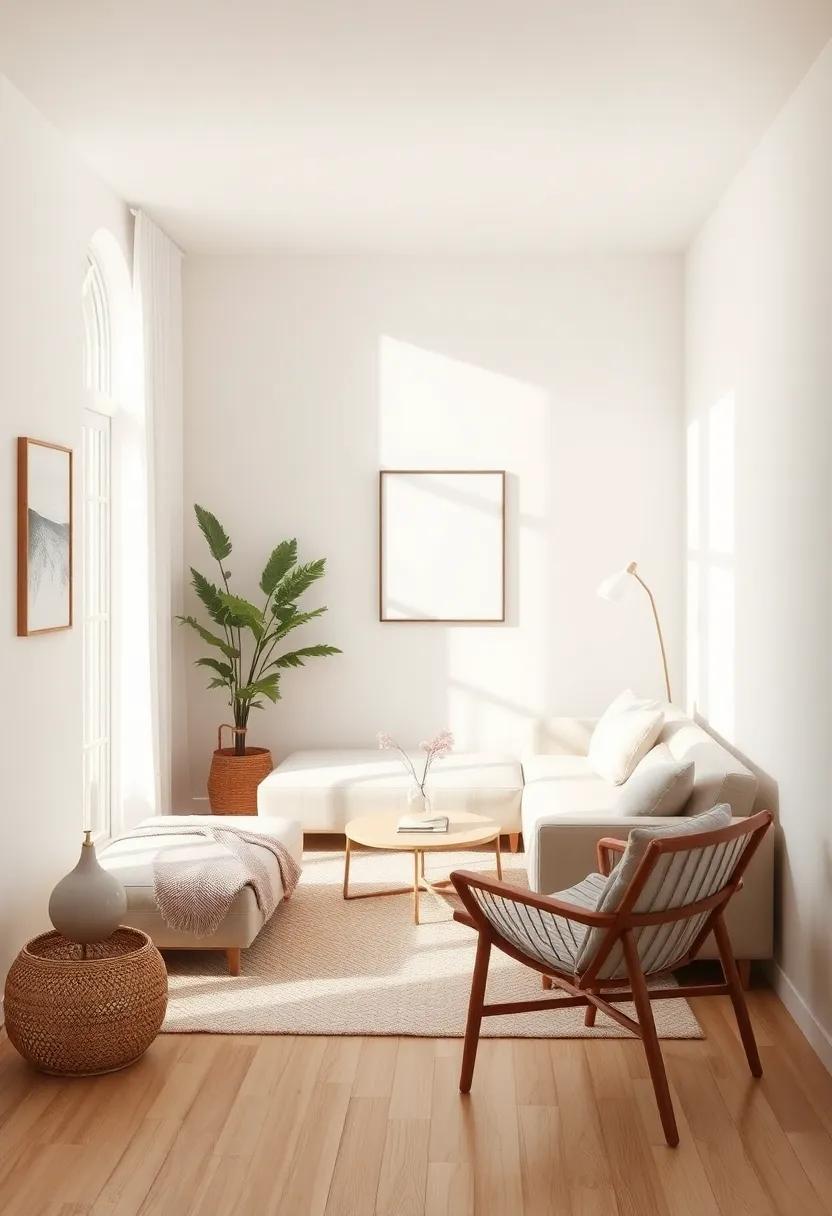
When it comes to maximizing usability in a small living room, multi-functional furniture is your best ally.Look for pieces that not only fulfill a single purpose but also seamlessly integrate additional features. For example, a sofa bed can transform your space from a cozy retreat into a guest room with ease. Additionally, consider ottomans that offer both seating and storage or coffee tables with built-in drawers. The goal is to reduce clutter while providing versatile options that adapt to your lifestyle.
Another effective strategy is to choose furniture that complements each other in function and style. before making a purchase,keep these tips in mind:
- Choose foldable items: Tables and chairs that can be easily stored away when not in use.
- Incorporate modular designs: Pieces that can be rearranged or expanded according to your needs.
- Opt for stylish storage solutions: Shelves with built-in cabinets or decorative baskets to hide away items.
By thoughtfully selecting multi-functional furniture, you will create a small living space that not only looks good but also functions effectively, turning your minimalist retreat into an extraordinary area for relaxation and enjoyment.
Creating a Focal Point that Draws the Eye in Small Rooms
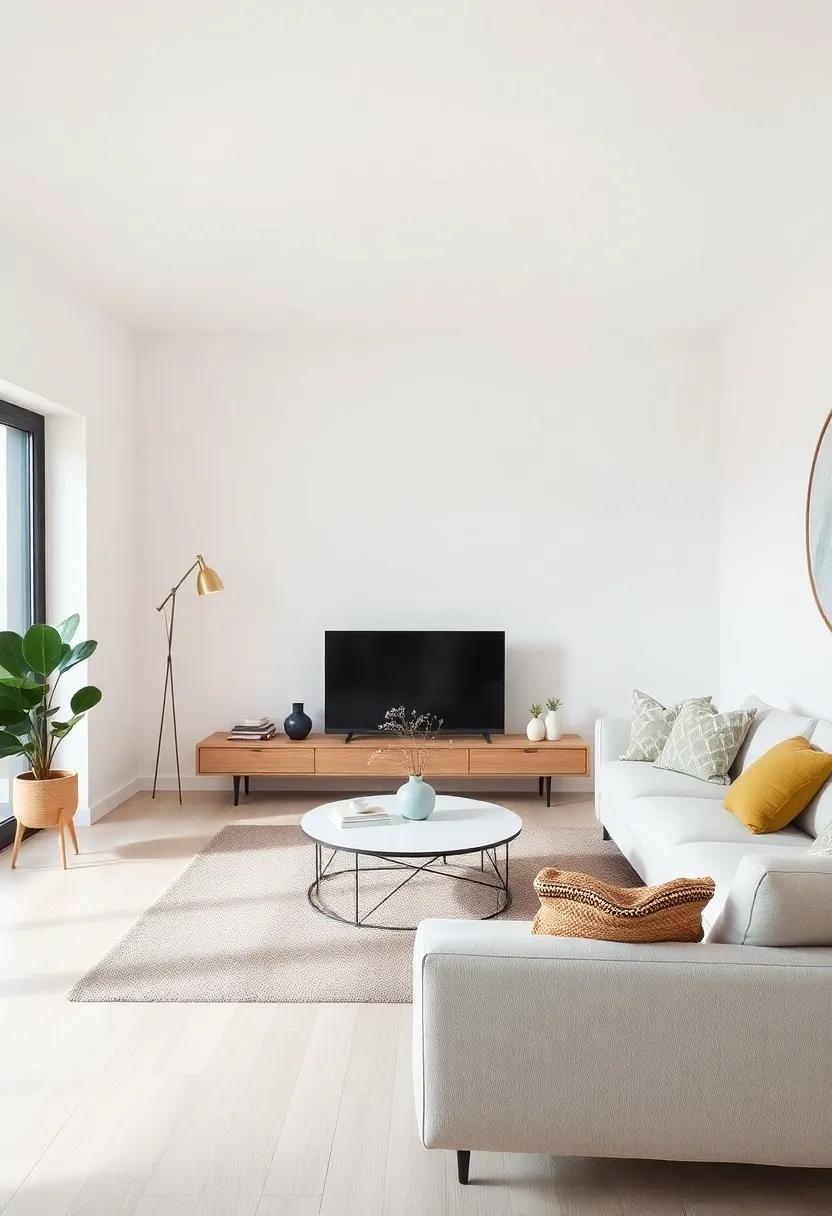
To create an engaging and harmonious atmosphere in a small living room, it’s essential to establish a focal point that draws the eye and enhances the overall design. One effective way to achieve this is by incorporating a statement piece, such as a large piece of art, an eye-catching light fixture, or a unique piece of furniture that stands out yet complements the minimalist theme. This approach not only elevates the aesthetic appeal but also serves as a conversation starter, inviting guests to engage with the space. Consider these options for your focal point:
- Bold Artwork: A large canvas or tapestry that resonates with your personal style.
- Sculptural Furniture: A chic chair or table with captivating angles and textures.
- Lighting Installations: A dramatic pendant light or floor lamp that illuminates the room while making a stylish statement.
Moreover, it’s crucial to maintain balance and cohesion in your design. Use a subtle color palette and ensure that the surrounding elements complement the focal point rather than compete with it. Opt for furniture that blends seamlessly into the background, allowing your focal point to shine.Below is a simple guide on how to accentuate your focal point using complementary design choices:
| Element | Complementary choices |
|---|---|
| Color Scheme | Neutral base with pops of color around the focal point |
| Textiles | Simple patterns or textures that soften the space |
| Accessories | Minimal decor that complements your focal piece without distraction |
Incorporating natural Light to Enhance Your Living Area
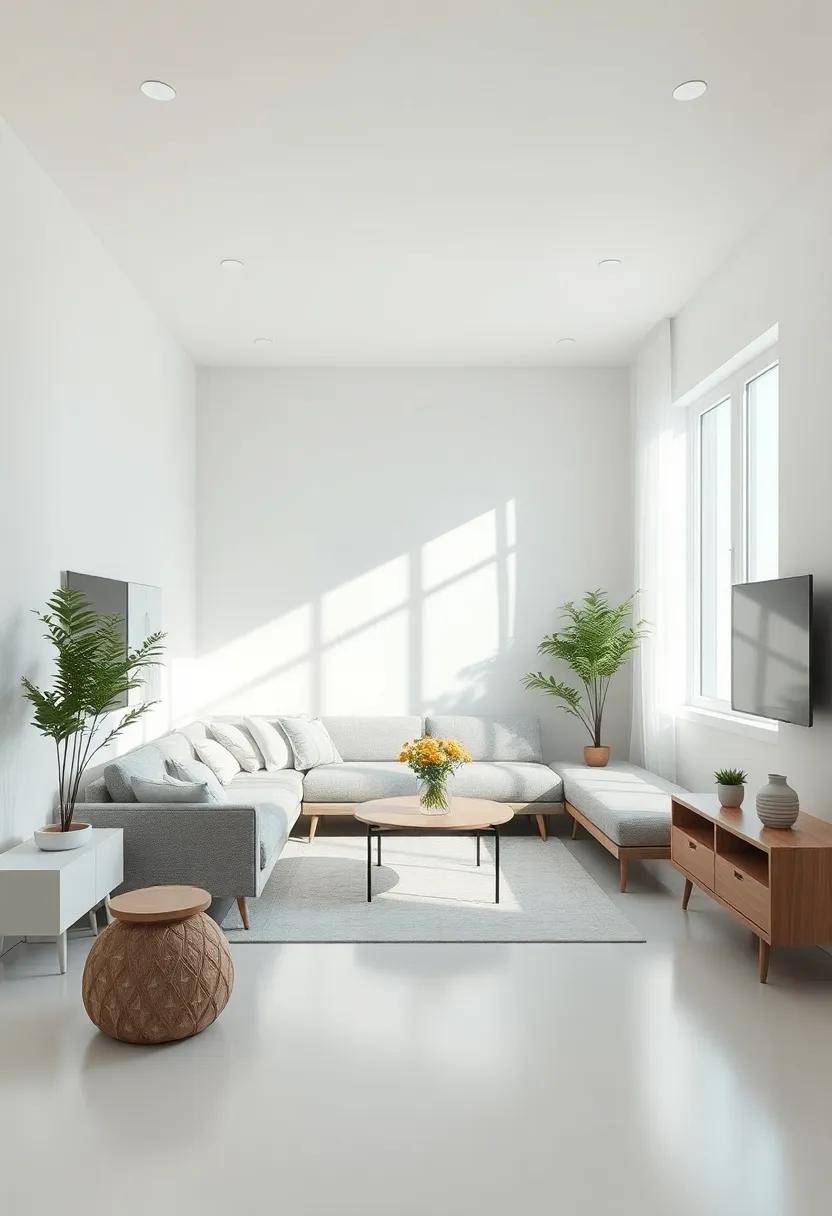
In the quest for a tranquil and harmonious living space, natural light plays a pivotal role in elevating the ambiance of your small living room. Maximizing sunlight can create an illusion of more space, making your cozy retreat feel open and inviting. Consider the following strategies to harness the beauty of natural light:
- Mirrors: Strategically placing mirrors opposite windows can reflect light throughout the room, amplifying brightness and creating depth.
- Light Colors: Opt for a color palette of soft whites, pale grays, or pastels that reflect light rather than absorb it.
- Sheer Curtains: Use sheer window treatments to filter sunlight while maintaining privacy, allowing for soft illumination.
Additionally, consider integrating architectural elements that invite sunlight, such as skylights or larger windows. If you wish to take a more flexible approach, window films or light-diffusing blinds can help control glare while still allowing natural light to flood your space. A well-placed indoor plant can also elevate the feel of the area, creating a serene connection to nature. Here’s a useful table highlighting some plants that thrive in natural light:
| Plant | Light Requirement | Care Level |
|---|---|---|
| Snake Plant | Indirect light | Low |
| spider Plant | Luminous,indirect sunlight | Easy |
| Pothos | Low to bright light | Very easy |
Utilizing Texture and Fabric for Added Warmth and Comfort
Creating a cozy atmosphere in your living room can be effortlessly achieved through the thoughtful use of texture and fabric.Layering different materials not only enriches the aesthetic of your space but also enhances its warmth and comfort. Consider incorporating soft throws, plush pillows, and inviting rugs. Each element allows you to play with colors and patterns while adding depth to the minimalist design.Fabrics such as wool, linen, and cotton can evoke feelings of warmth, making your small living room feel more inviting. Choose hues that complement your existing color palette to maintain a cohesive look.
to further accentuate the design, think about using a variety of fabric finishes. Mixing smooth silks with textured knits or soft faux fur can create a tactile experience that draws people in. An ideal arrangement may include:
- Velvet cushions for a touch of luxury
- Knitted throws to enhance warmth
- Natural fiber rugs for a grounded feel
- linen curtains to diffuse light
By thoughtfully selecting these elements, you foster a space that is not only visually appealing but also emotionally soothing. A beautifully crafted fabric tableau enables you to invite warmth into your living space while adhering to the principles of minimalist decor.
Strategically Placing Plants to Bring Life into Your Space
In a small living room, strategic plant placement can work wonders in enhancing the ambiance while staying true to a minimalist aesthetic.Start by choosing a few key plants that thrive indoors, such as snake plants or peace lilies. These plants not only purify the air but also require minimal maintenance, making them perfect companions for a simplified lifestyle. Position them in areas of natural light, such as near windowsills or on tables, to create visual focal points without overwhelming the space.
Consider mixing heights and textures to add depth. For example, place a tall plant, like a fiddle leaf fig, in a corner to draw the eye upwards, while using smaller succulents on shelves or coffee tables to create layers and interest.To maximize space, wall-mounted planters can be effective; they allow for greenery without taking up precious floor area. An arrangement of plants can also double as a natural divider in an open layout, subtly guiding movement through the room while celebrating the serenity of nature.
optimizing Storage Solutions for Clutter-Free Living
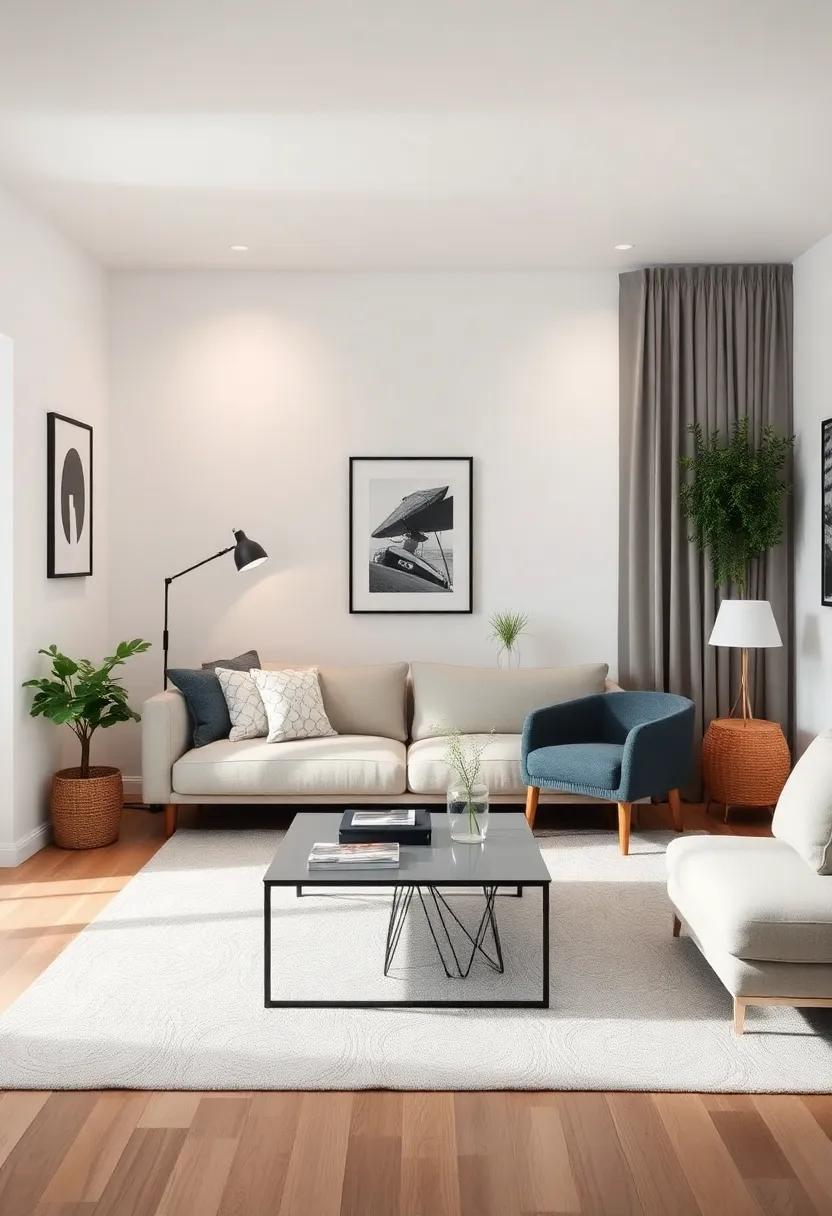
Creating a clutter-free living space begins with smart storage solutions that harmonize functionality and aesthetics. Consider utilizing multi-functional furniture that serves more than one purpose while providing ample storage. As a notable example, a stylish ottoman can double as a coffee table and hide away blankets or magazines. Wall-mounted shelves can transform vertical space into a showcase for your favorite decor, keeping surfaces clear. Additionally, baskets and bins can neatly contain smaller items, keeping them out of sight while complementing your minimalist theme.
embracing minimalism is all about prioritizing essential items and ensuring that every piece has a designated place. Implementing a simple organizational system can substantially enhance your living room’s overall vibe. To give a visual overview, consider the following table that outlines effective storage ideas:
| Storage Solution | Benefits |
|---|---|
| Floating Shelves | Maximizes wall space while displaying decor |
| Storage Ottomans | Offers seating, storage, and a stylish touch |
| Under-sofa Bins | Keeps out-of-season items tidy and accessible |
| shadow Box Frames | Showcases keepsakes without cluttering surfaces |
Choosing Lighting that Complements a Minimalist Aesthetic
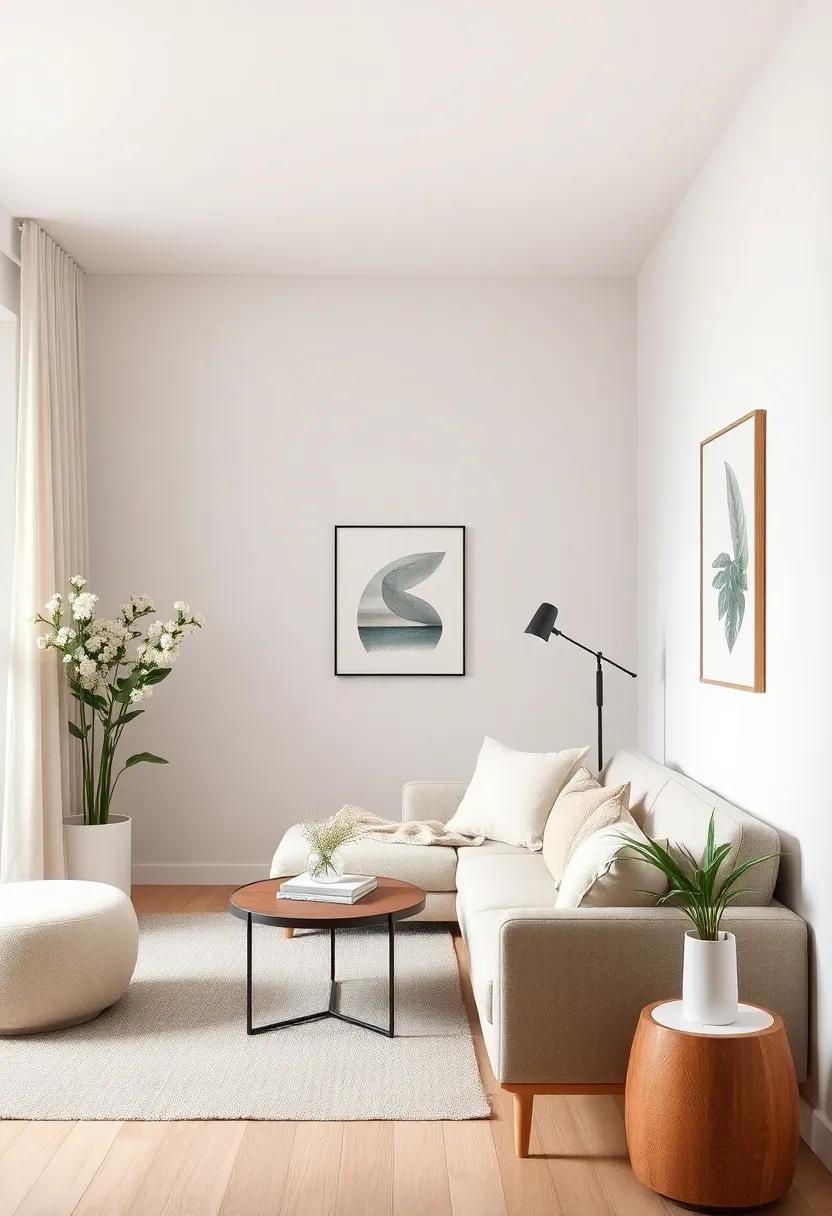
When selecting lighting for a minimalist living room, the goal is to enhance the space without overwhelming it. focus on fixtures that embody clean lines and functional design. Opt for options such as pendant lights or sleek floor lamps that add a touch of elegance while maintaining simplicity. Consider incorporating dimmable lights to create a warm atmosphere, allowing you to adjust the brightness based on your mood and the time of day. The use of natural light is also crucial; light,airy curtains can filter sunlight gently,preserving the peaceful aesthetic that defines minimalism.
To achieve a cohesive look, think about the materials and colors of your lighting choices. Stick to a palette that includes neutral tones like whites, grays, and soft pastels, ensuring the fixtures blend harmoniously with your décor. Here’s a quick guide to help you choose complementary lighting styles:
| Lighting Type | Material | Style Impact |
|---|---|---|
| Wall Sconces | Metal or Glass | Adds vertical interest |
| Pendant Lights | Wood or Fabric | Focuses attention downward |
| Table Lamps | ceramic or Concrete | Brings warmth and texture |
Selecting the right lighting is pivotal in crafting a serene and stylish minimalist retreat that feels both inviting and spacious.
Balancing Open Space and Intimacy in Your Living Room
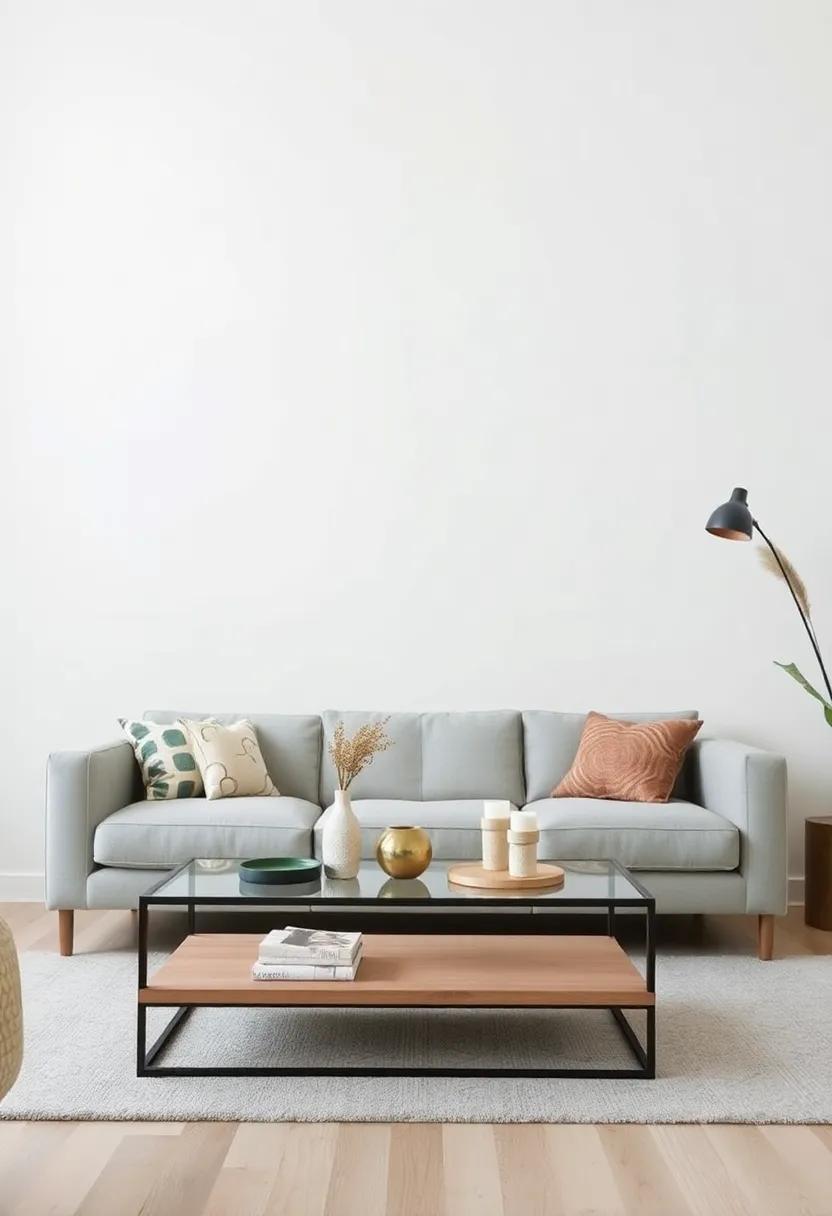
Creating a harmonious living room is all about finding the right balance between open space and intimacy. In a small area, carefully selected furniture arrangements can help you establish distinct zones without compromising the feeling of spaciousness. Consider floating furniture away from walls, positioning a cozy sofa in the center complemented by lightweight chairs or poufs that can easily be moved around.This not only encourages conversation but also allows for smooth flow and movement within the space.
Another effective way to foster a sense of intimacy is through the use of soft textures and layered lighting. Incorporate elements such as chunky knit throws, plush pillows, and rugs that define the area while inviting warmth. For lighting, opt for dimmable fixtures or table lamps that can create a cozy ambiance during evenings. Additionally, adding a few strategically placed plants can soften hard lines and visually connect the indoor environment with nature, enhancing the overall coziness of your small retreat.
Personalizing with Meaningful Decor that Tells Your Story
Creating a space that reflects your personality and experiences doesn’t have to mean cluttering your small living room with too manny items. Instead, focus on thoughtfully curated pieces that resonate with your journey.Consider integrating items such as:
- Family photos: Select a few of your favorites to display beautifully in a cohesive gallery wall.
- Travel souvenirs: A single unique piece can evoke memories of a beloved destination.
- Artwork: Invest in a local artist’s work that speaks to your taste and history.
To truly personalize your living space, think about how each piece serves not only as decor but as a conversation starter.A well-placed object can bring warmth and meaning. Pay attention to the color palette and materials, choosing items that harmonize to enhance the tranquility of your minimalist retreat. Below is a simple table to guide you in selecting pieces that resonate with your story:
| Decor Type | Suggested Placement | Story Element |
|---|---|---|
| Framed Photos | Accent Wall | memories & Family |
| Travel Mementos | Bookshelf | Adventures & Exploration |
| Special Artwork | Focal Point | personal Taste & Passion |
Exploring Minimalist Art for a Contemporary Touch
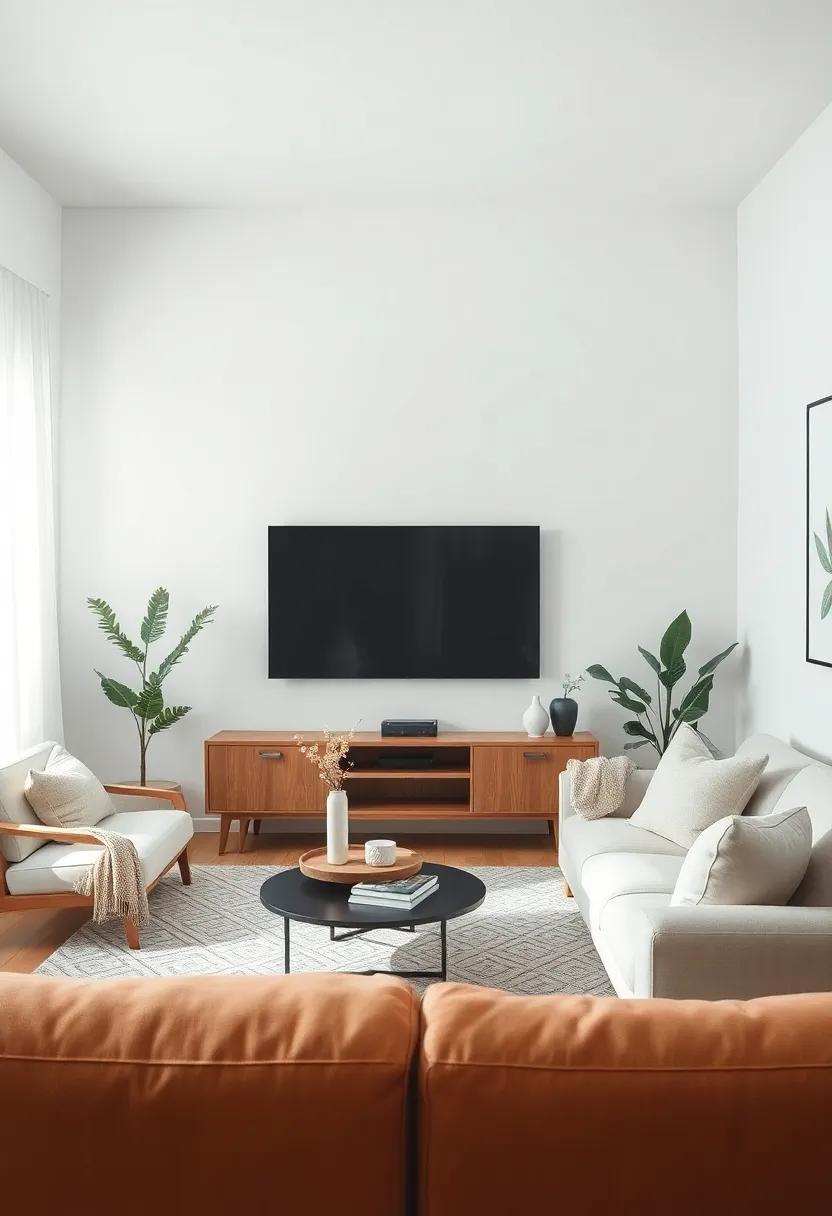
Minimalist art is not just a visual experience; it is a ideology that can transform spaces and mindset alike. In a small living room, adopting a minimalist aesthetic can free the environment from clutter, creating a serene atmosphere. To achieve this, consider incorporating neutral color palettes such as whites, beiges, and soft grays that reflect light, making the space feel more expansive.Using simple geometric shapes in artwork or furniture can enhance the minimalist vibe while adding a contemporary twist. To further amplify this effect, select a few key pieces that evoke tranquility, such as a single large canvas or a distinctive sculpture, allowing them to stand out as focal points.
Emphasizing functionality over abundance is crucial when curating a minimalist living area. to maximize comfort without sacrificing style, keep the following in mind:
- Choose multi-functional furniture, like an ottoman that doubles as storage.
- Incorporate live plants to add life without overwhelming the design.
- Utilize open shelving to display a select few decorative items rather than filling every surface.
- Favor natural materials such as wood, stone, and plant fibers, which bring warmth and authenticity to the space.
By embracing these principles, your living room can transform into a cozy yet distinctly modern retreat that balances simplicity with style.
Incorporating Cozy Textiles for an Inviting Atmosphere
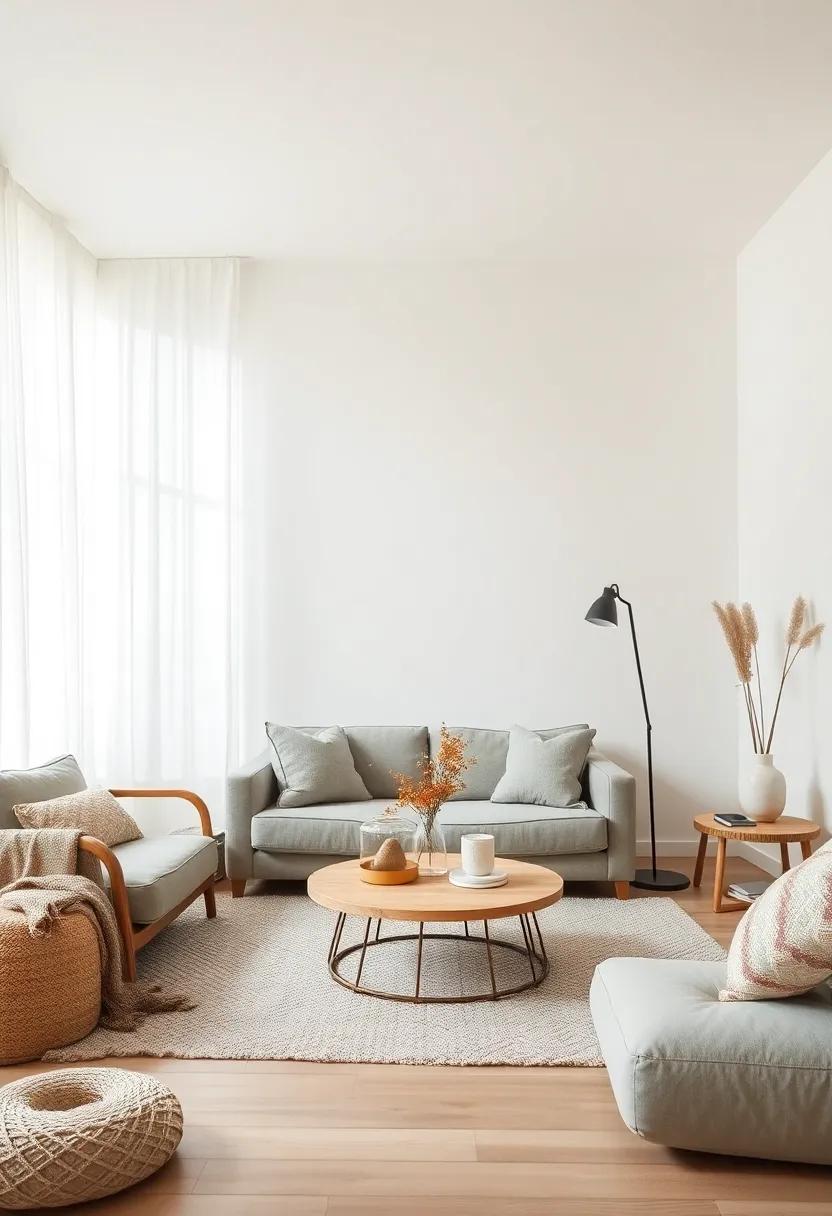
Creating an inviting atmosphere in a small living room can be effortlessly achieved by incorporating warm and cozy textiles. Soft throws, plush cushions, and tactile rugs work together to foster a sense of comfort, while also enhancing the minimalist aesthetic. consider the following elements to elevate your space:
- Layered Textures: Mix various textiles like wool,cotton,and linen to create depth and sophistication.
- Neutral Color Palette: Utilize soft hues such as beige, cream, or light gray to maintain a serene vibe while allowing the textures to shine.
- Natural Fibers: Incorporate materials like jute or sisal in your rugs for a touch of earthiness that complements the minimalist approach.
In addition to the basic elements, think about how textiles can add functionality and warmth to your living space. Select multifunctional pieces, such as an oversized knitted throw that can double as a blanket for chilly evenings. An attractive coffee table can serve as a canvas to showcase beautifully folded throws.You may also consider creating a small textile-inspired table arrangement:
| Textile Item | Function |
|---|---|
| Knitted Throw | Adds warmth and texture |
| Linen Cushion | Provides comfort and softens furniture edges |
| Wool Rug | Defines the space and offers warmth underfoot |
Defining Zones to Maximize Functionality in Limited Space
To fully embrace the concept of space in a small living room, it’s essential to create distinct zones that enhance functionality while maintaining a minimalist aesthetic. Consider implementing the following strategies:
- Seating Area: Place a small sofa or two minimalist chairs around a central coffee table,ensuring adequate movement. Use a lightweight rug to visually define this area, providing a cozy environment that draws you in.
- Reading Nook: If space allows, carve out a corner with a agreeable chair and a slim side table. Enhance this zone with a small bookshelf, which can double as décor, showcasing your favorite reads.
- Entertainment Zone: Prioritize a compact media console against a wall. Wall-mounted shelves can house electronics and decorations without sacrificing precious floor space.
Functionality is further amplified when you promote versatility in your furniture choices. Explore options like:
| Furniture Item | Functionality |
|---|---|
| storage Ottoman | Seating and storage in one |
| Foldable Dining Table | Flexible dining and work space |
| Wall-mounted Desk | Compact workspace that saves floor space |
Utilizing Mirrors to Create an Illusion of Space and Light
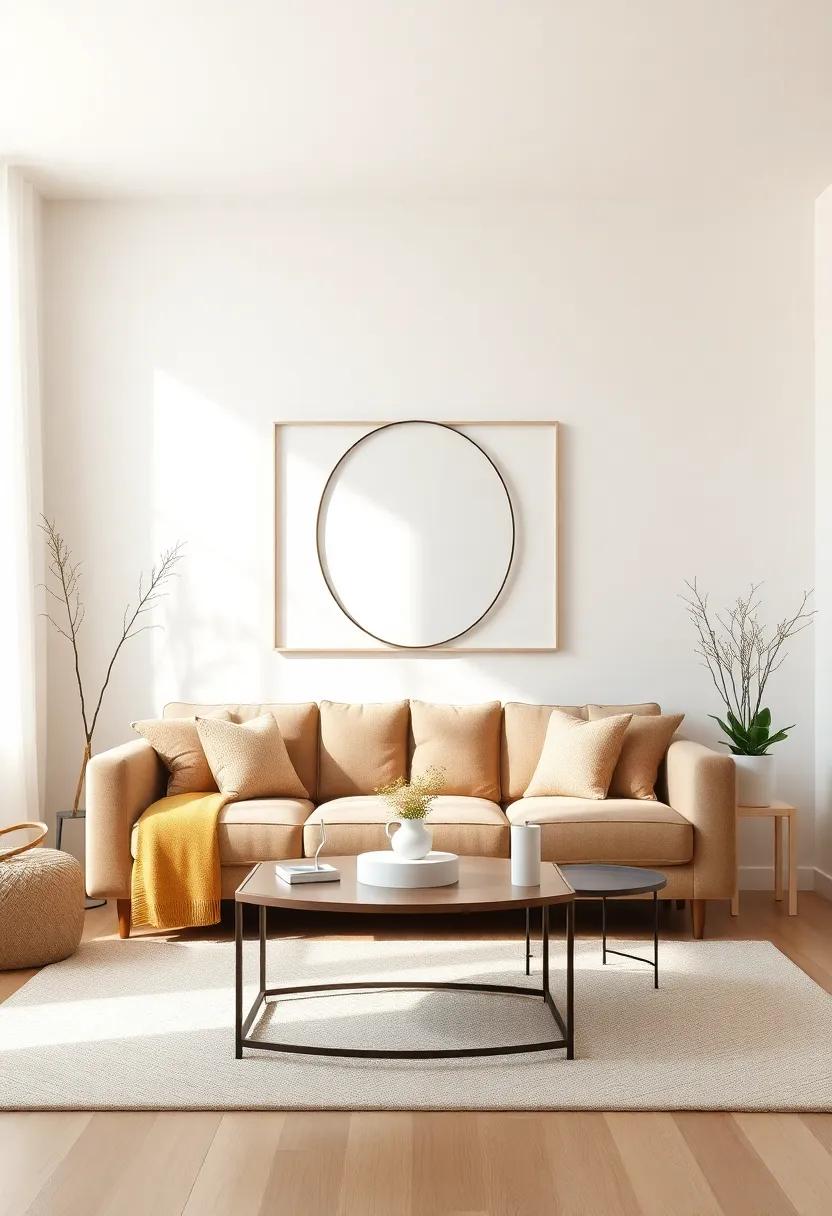
Mirrors have an incredible ability to transform a small living space, making it feel larger and more inviting. By strategically placing mirrors on walls, you can create the illusion of depth, drawing the eye across the room. Consider these tips to maximize their effect:
- Choose Large Mirrors: A single large mirror can act as a statement piece, reflecting both light and the surrounding decor, amplifying the sense of space.
- Position for Reflection: place mirrors opposite windows or light sources to bounce natural light throughout the room, enhancing brightness without adding clutter.
- Layered Reflections: use multiple smaller mirrors at varying heights to create an intriguing visual dynamic, giving the room a more spacious feel.
Additionally, incorporating mirrors as part of your decor can tie in with a minimalist aesthetic seamlessly. Rather of ornate frames, opt for simple designs that complement your color palette. This not only maintains a clean look but also allows for more light to permeate the space. Consider the following ideas for integration:
| Mirror Type | Placement Suggestion |
|---|---|
| Wall-mounted | Above a console or side table to reflect art or plants. |
| Floor-length | In a corner to elongate the visual lines of the room. |
| Decorative | As part of a gallery wall to multiply the impact of your decor. |
Embracing Minimalist Principles for a stress-Free Environment
Creating a serene and inviting atmosphere in your small living room doesn’t require an extensive overhaul; it can be achieved through the careful selection of elements that embody simplicity.Start by decluttering your space to make room for only what matters. Consider the following approaches:
- Limit color palettes: Stick to neutral tones with occasional accent colors to create visual harmony.
- Choose multifunctional furniture: Opt for pieces that serve more than one purpose, like a coffee table with hidden storage.
- Incorporate natural elements: Use plants or natural wood to bring warmth without overwhelming the senses.
To maintain a minimalist ethos, practice intentionality with every item you bring into your living space. Design your living room layout with care, ensuring each piece complements the overall aesthetic rather than competing for attention. Consider utilizing a simple table to categorize and visualize your essentials:
| Essential Items | Purpose |
|---|---|
| Cozy Sofa | Comfort and relaxation |
| Bookshelf | Storage and display |
| Accent Chair | Additional seating |
| Small Coffee Table | Functional centerpiece |
By focusing on these principles, you can transform your living room into a cozy retreat that invites relaxation and reduces stress, creating a sanctuary amidst the chaos of life.
creating a Cozy Reading Nook within Your small Living Area
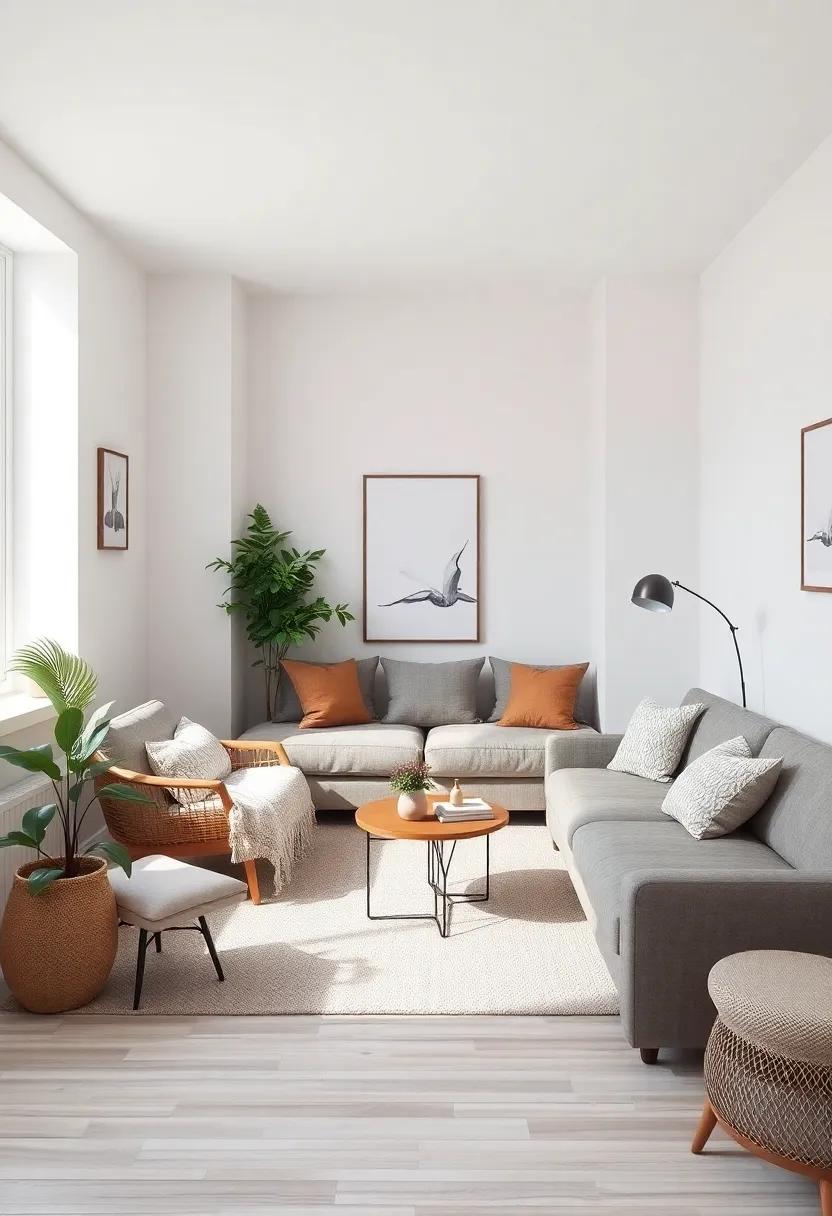
To create a cozy reading nook in your small living area, it’s essential to select a spot that naturally invites relaxation. Look for a corner by a window or a quiet area of the room, and enhance it with a comfortable chair or a plush floor cushion. Layer in soft textiles such as a warm throw blanket and some textured pillows to create a welcoming ambiance. You can also use an oversized bookshelf or a small floating shelf to showcase your favorite reads, adding both style and organization to your nook.
Lighting plays a crucial role in cultivating a serene reading environment. Consider incorporating warm, adjustable lighting to brighten your space without harshness.A small table lamp or battery-operated lights can work wonders. To enhance the experience, think about adding natural elements like a potted plant or a small vase of fresh flowers to your reading nook. These touches not only add life to the area but also create a calm atmosphere that encourages you to lose yourself in a good book.
arranging Furniture for Flow and Ease of Movement
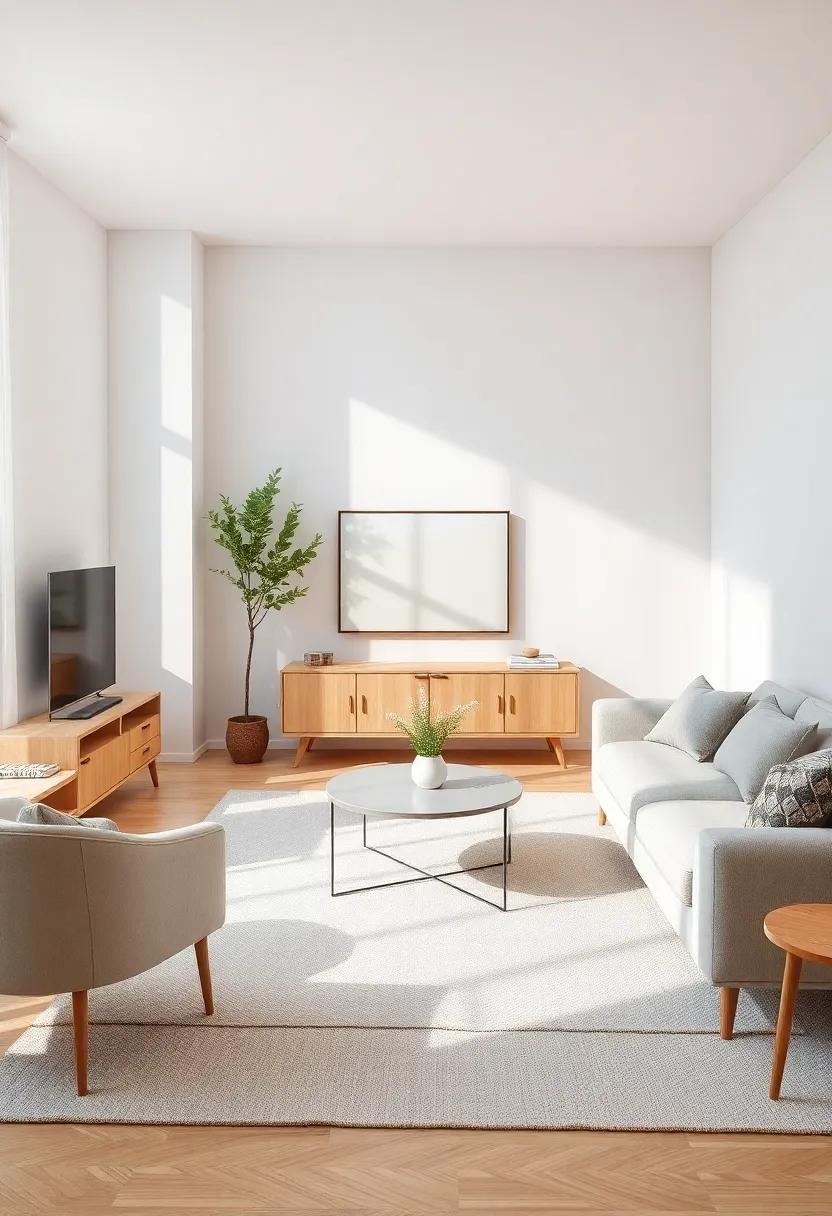
When designing a small living room, maintaining a smooth flow and allowing for ease of movement are essential for creating an inviting atmosphere. Start by considering the purpose of your space. Identify key activity areas, such as seating, reading, and entertainment, and arrange your furniture to support these functions. Use a single focal point—like a fireplace, window, or a piece of art—to create a natural flow of movement around the room.By positioning seating in a way that knows how to encourage conversation and engagement, you effectively make the space feel larger and more connected.
To maximize flow, embrace open pathways and avoid overcrowding. Here are some practical tips to keep in mind:
- Choose furniture with legs to allow for visibility beneath, creating an illusion of spaciousness.
- Opt for lightweight, modular pieces that can be moved easily based on your needs.
- Implement multi-functional furniture, such as ottomans with storage or a coffee table that can double as a desk.
Additionally, consider using rugs to define spaces within your room without interrupting the flow. A well-placed area rug can anchor furniture and delineate areas, subtly guiding movement while maintaining open pathways. By thoughtfully arranging your furniture, you can cultivate a minimalist retreat that feels both cozy and spacious.
Adopting a Seasonal Approach to Refreshing Your Space
Embracing the changing seasons offers a perfect chance to breathe new life into your small living space.Consider employing a seasonal palette that reflects the essence of each time of year.For spring, think soft pastels and floral accents, while summer can bring in bright and airy tones. Autumn invites warm, earthy hues and cozy textures, and winter is all about rich colors and layers that exude warmth.Switching out small décor items, such as throw pillows and art, is an effortless way to reinvigorate your surroundings without overwhelming your minimalist ethos.
Incorporating nature-inspired elements can further enhance this seasonal shift. Simple touches like a seasonal plant,a bowl of fresh fruits,or a handmade seasonal wreath can transform the mood of your living room.Aim for a few key pieces that resonate with the current season while keeping the overall aesthetic uncluttered.A small coffee table can become a canvas for seasonal decor—using a trio of elements that share a common theme can create an inviting focal point. Here’s a quick look at ideas for seasonal touches:
| Season | Decor Element | Color Palette |
|---|---|---|
| spring | Fresh flowers | Pastels – light pinks, greens |
| Summer | Citrus fruits | Bright yellows, blues |
| Autumn | Pinecones and gourds | Rich oranges, browns |
| Winter | Cozy blankets | Deep reds, greens |
Maximizing Vertical Space for Stylish and Practical Solutions
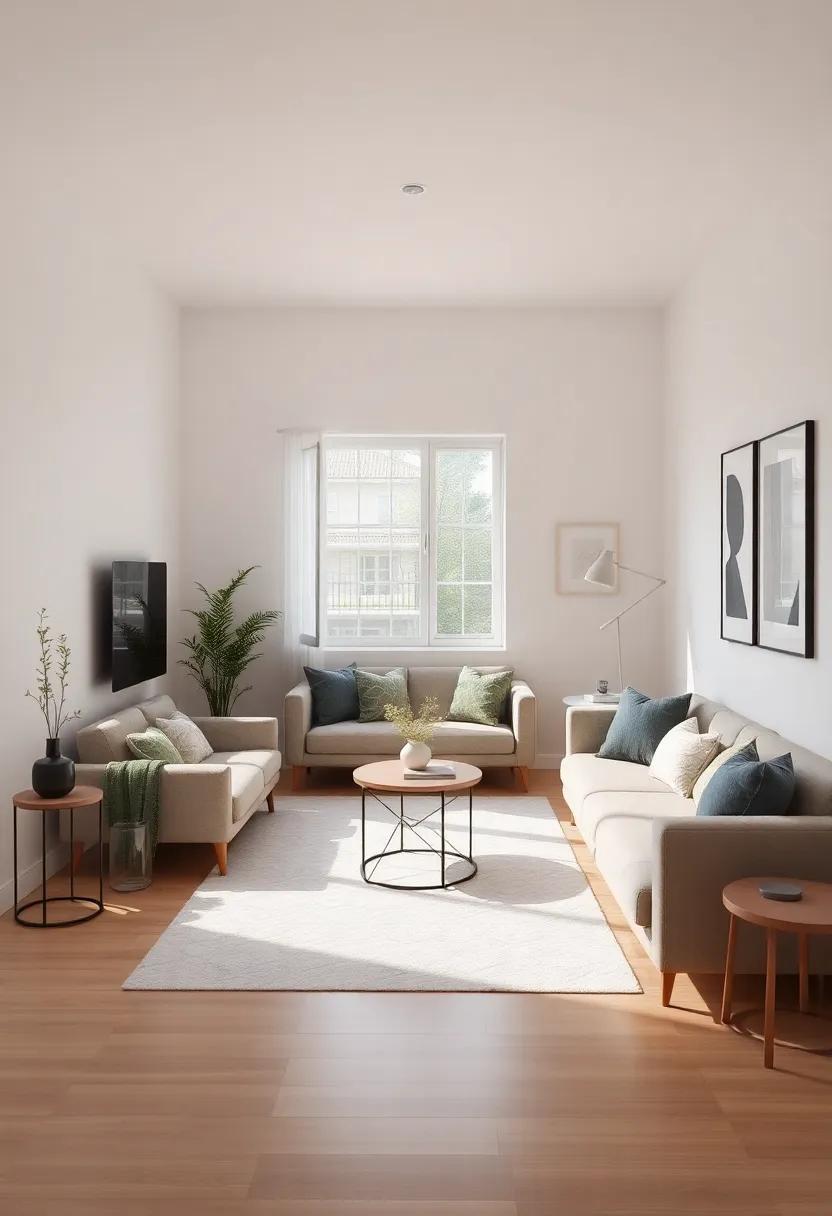
In small living rooms, every inch counts, and maximizing vertical space can significantly enhance both style and functionality. Consider incorporating tall bookshelves or floating shelves that draw the eye upward, creating an illusion of height while providing practical storage for your favorite decor and essentials. These shelving solutions can serve as a canvas for showcasing plants, framed art, and treasured books, adding personality while maintaining simplicity. Moreover, using multi-functional furniture like ottomans with storage capabilities frees up floor space, allowing you to maintain a serene and uncluttered atmosphere.
Another eye-catching way to utilize vertical space is by introducing wall-mounted storage solutions. Floating cabinets or pegboards can store everything from kitchen items to natural accents, keeping surfaces tidy. Adding a vertical garden not only beautifies the room but also brings a touch of nature indoors, enhancing the overall ambiance. Consider creating a curated display using a mix of sizes and shapes, ensuring that your small living room feels spacious yet welcoming. Remember, the key is to choose pieces that resonate with your style while maintaining a cohesive and minimalist vibe.
Curating a Simple Yet Inviting Coffee Table Display
Creating a coffee table display that strikes the perfect balance between aesthetic appeal and functionality can elevate the warmth of your small living room. Start by selecting a neutral-colored table that complements your overall theme. Layer your display with a few favored decor elements that resonate with your style, such as:
- A small potted plant for a touch of greenery.
- A stack of your favorite books or magazines for an inviting feel.
- A decorative tray to organize smaller items.
- A scented candle to enhance the atmosphere.
Consider the balance and symmetry of your arrangement; avoid overcrowding by giving each piece room to breathe. Use varying heights to attract the eye, such as placing a tall candle holder next to a shorter decorative item. For a cohesive look, choose a color palette that harmonizes with your existing decor. Below is a simple table layout idea to inspire your arrangement:
| Item | Purpose |
|---|---|
| Potted Plant | brings life and freshness |
| Books | Conversation starters |
| Tray | Organizes smaller items |
| Candle | Creates a cozy ambiance |
Using Color and Light to Define Your Minimalist Retreat
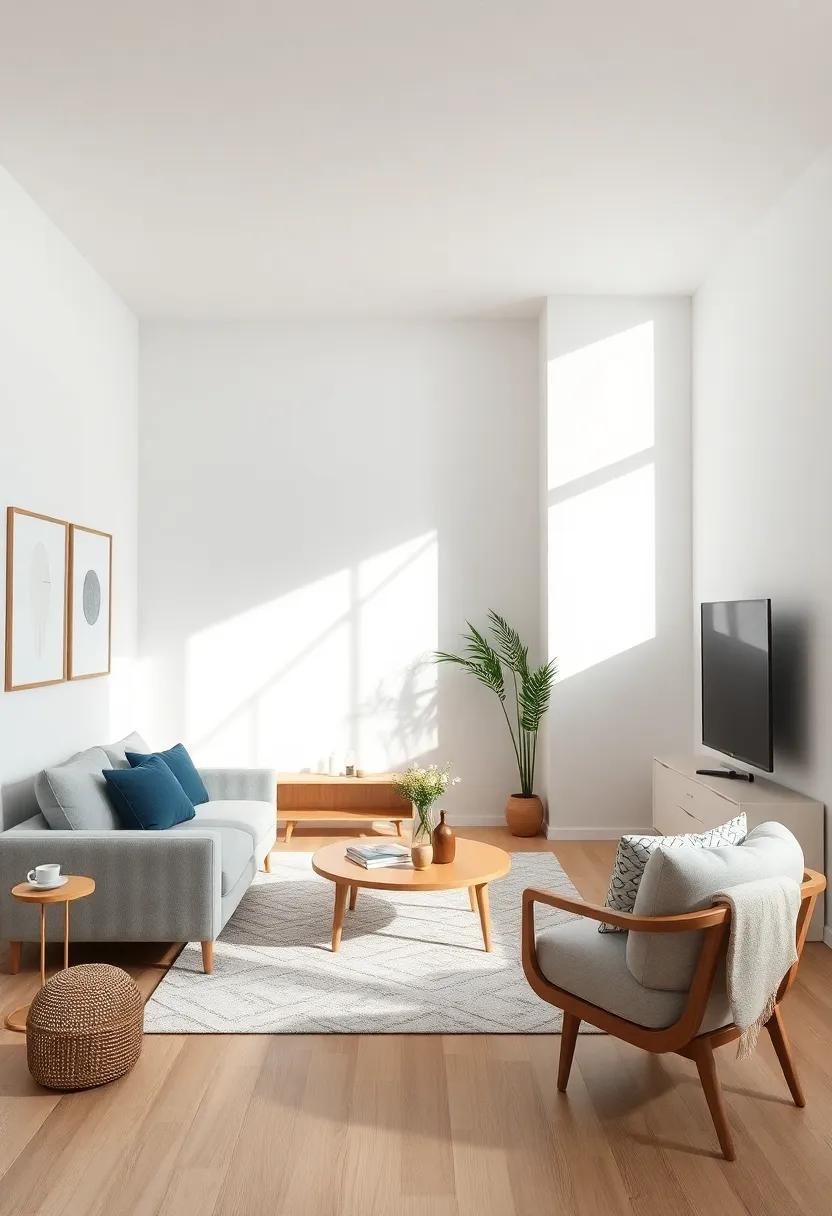
Color and light can dramatically alter the perception of space in your small living room, enhancing the serene ambiance characteristic of minimalist design. Soft, neutral tones such as whites, beiges, and light grays can create an airy feel, making the space appear larger and more open. These hues, when combined with strategically placed lighting, can highlight the essential elements of your décor and artful simplicity. Consider using a warm light palette that invites comfort yet maintains clarity, such as soft white or warm LED bulbs that imitate natural sunlight. Accent walls in subdued pastels can also offer a touch of personality without overwhelming your minimalist vision.
To effectively harness the power of light,think about the interplay between natural and artificial sources. large windows or translucent curtains can maximize daylight, while mirrors reflect light, creating an illusion of depth. Here are a few ways to optimize color and light in your minimalist retreat:
- utilize soft,layered lighting—combine overhead fixtures,floor lamps,and sconces.
- Incorporate natural elements, such as plants, that can thrive in various light conditions.
- Choose furnishings with light-colored fabrics to enhance the bright and clean aesthetic.
Consider the following table to visualize how different lighting approaches can influence the atmosphere:
| Lighting Type | Effect on Space | Suggested Color palette |
|---|---|---|
| Natural Light | Enhances openness | Whites, pastels |
| Warm LED | Creates a cozy vibe | Soft yellows, creams |
| Candlelight | Adds intimacy | Deep hues, golds |
Key Takeaways
As we conclude our exploration of embracing simplicity in your small living room, it’s clear that the journey toward creating a cozy minimalist retreat is both an art and a personal endeavor. Each thoughtfully chosen element contributes not just to the aesthetics of your space, but also to the atmosphere that invites relaxation and introspection. By prioritizing functionality and serenity over clutter, you open up possibilities for a more harmonious living environment—a sanctuary that reflects your values and lifestyle.
Remember,the magic of minimalism lies in the beauty of restraint; it’s about making space for what truly matters in your life. Let your living room be a canvas for moments of connection, creativity, and peace. As you embark on this transformative path, may your small space resonate warmth, simplicity, and comfort—a true retreat for the soul. embrace the simplicity, and let it guide you to a more intentional way of living.
 Decorationg Interior Design
Decorationg Interior Design 